I gave an Old World postmortem at GDC 2022, which is available on YouTube:
However, I fully scripted the talk ahead of time, so I decided it would be worth taking the time to post the slides online, in three parts to have mercy on your browser.
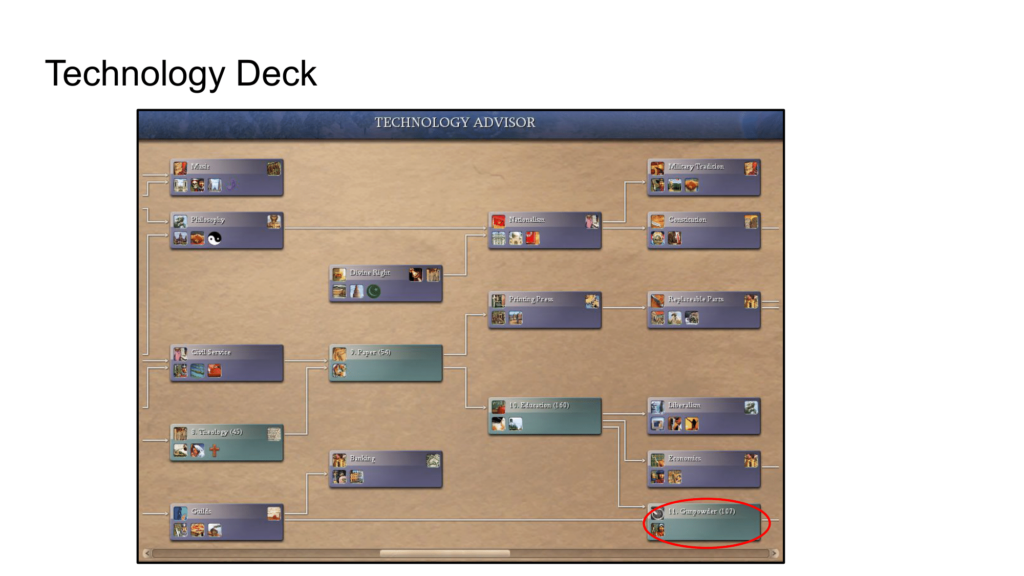
Now, let’s talk about the tech tree, which has always had a problem with golden paths. For example, at the start of Civ 4, you can just click on Gunpowder, and the game will show you exactly which 11 technologies to research to get there. For a game with average playtimes in the hundreds of hours, this becomes a real problem. Indeed, with the popularity today of games based on random runs, fixed tech trees are going against the grain of contemporary design.
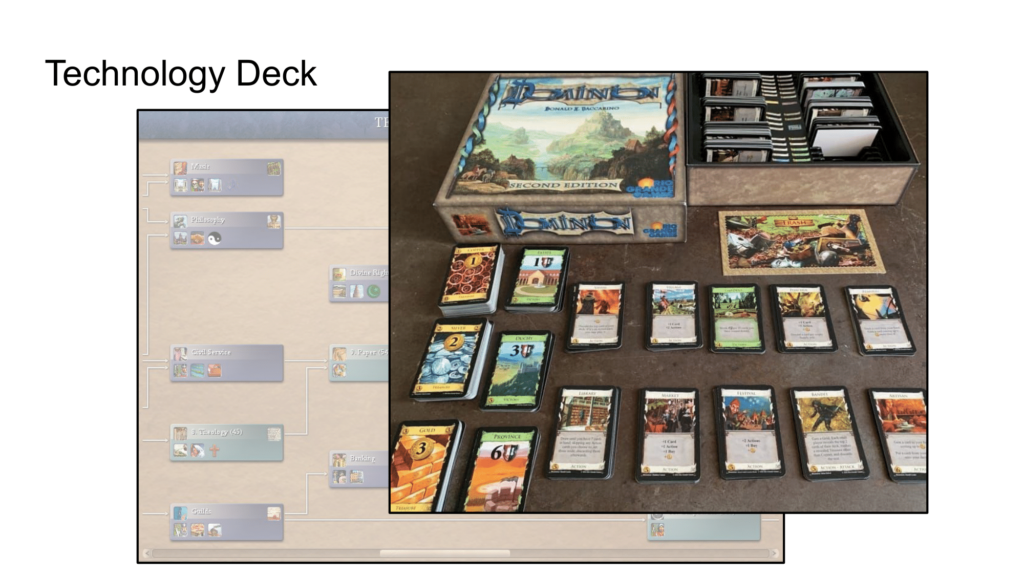
I found a solution from deck-building games like Dominion – what if we treated all the techs like cards instead?
So, all techs currently available are in the deck, and you draw four at a time. The cards you don’t pick go into the discard pile along with any new cards that you unlock. Then, you draw four more for your next choice and don’t reshuffle until you have exhausted the deck. This doesn’t just add variety – it also makes the decisions more interesting because you know that when you don’t pick a tech, it won’t be available again until it comes all the way back through the discard pile through the draw pile and then back to your hand. Passing on Ironworking means that you might not see it again for a long time.
The system is certainly more complicated than a traditional tech tree, but it helps a lot that many players are already familiar with deck-building mechanics because of their popularity.
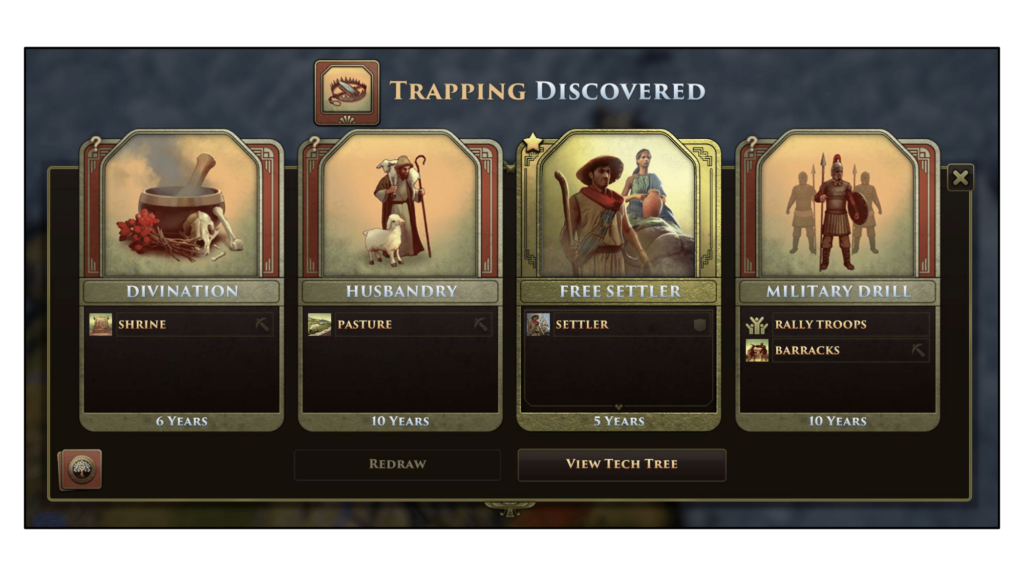
Turning techs into “cards” also enables the idea of bonus cards, which give an instant boost, like a Free Settler, as you see here, or a Great Scientist or a lump sum of Stone. There is a nice short-term vs. long-term tradeoff here as science points are not easy to come by, so slowing your progress for a short-term boost is a difficult choice, an interesting decision.
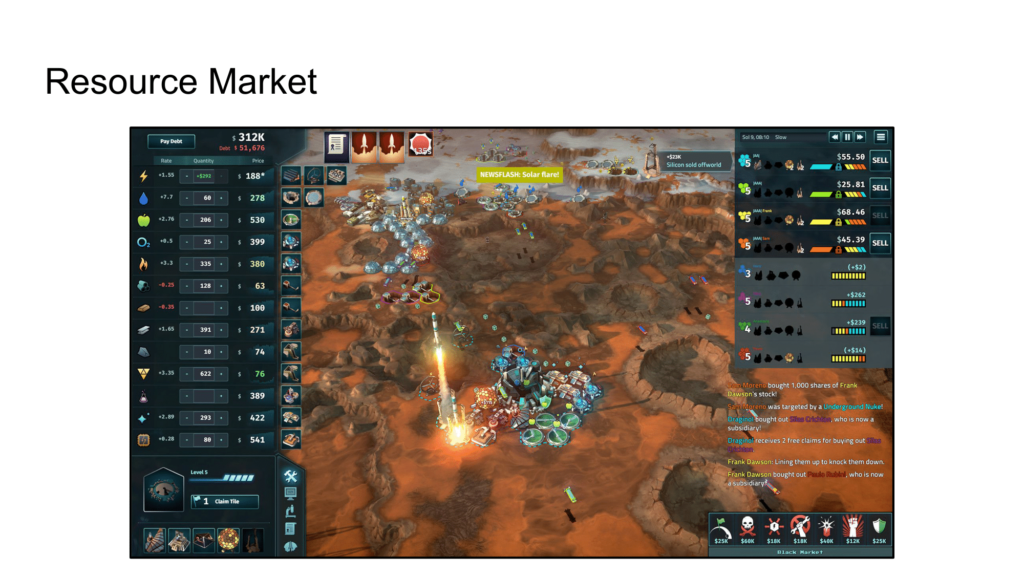
If you’ve played my last game, Offworld Trading Company, you know that I love stockpiles and markets and building improvements that spit out resources at different rates, so I wanted to give that a try for Old World.
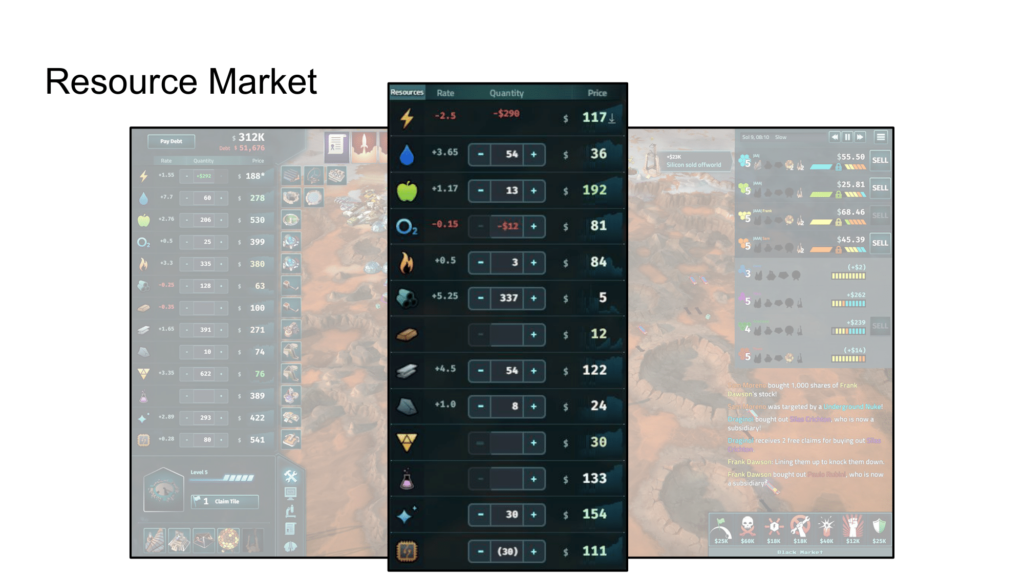
One of the reasons Civ games haven’t done this is that cities can get stuck because they couldn’t build something – if you have no access to Stone, are you just not able to build buildings? What happens each turn then? We solved that problem by borrowing the dynamic open market from Offworld.
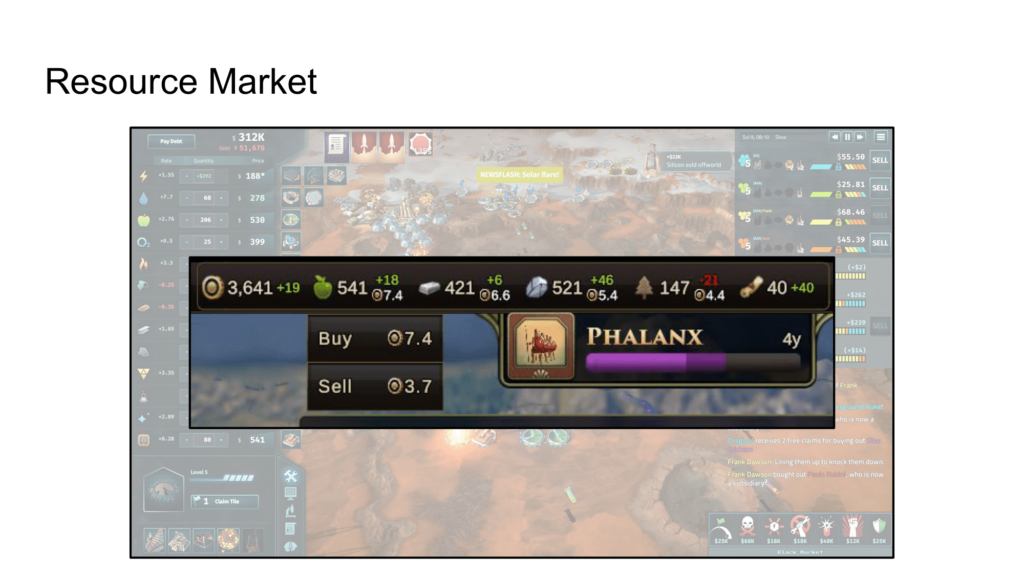
Need some iron to build a Swordsman? Just buy it from the market. If the price of iron is too high, then sell off your excess stone first.
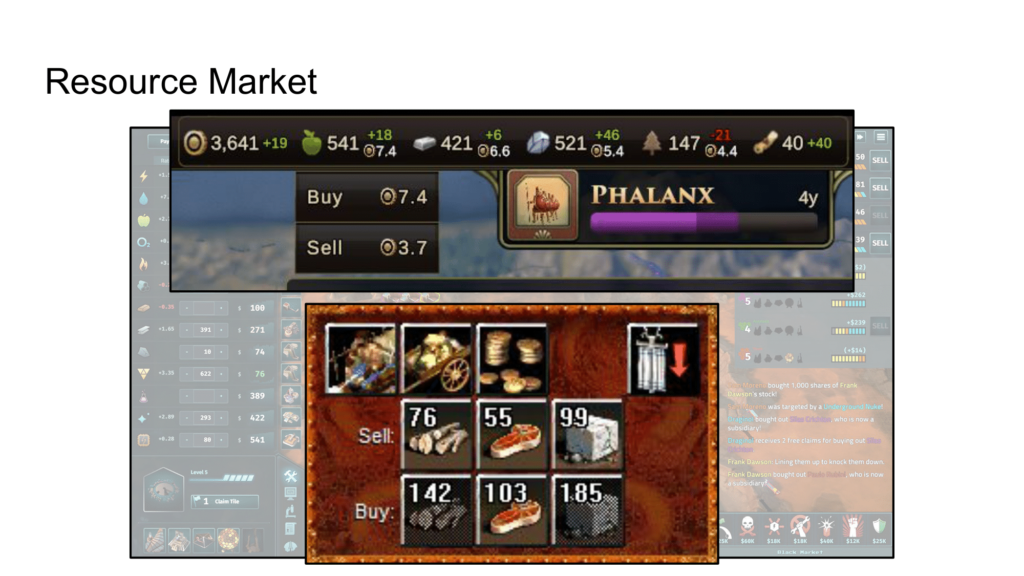
Note that although we were making a game with a free market, it’s not a game ABOUT the free market, so instead of having a single price for all goods, there would be some friction, so we used the original system from Age of Empires where the buy price is double the sell price. Thus, while buying resources from the market is always an option for the player, it’s generally best to produce them yourself.
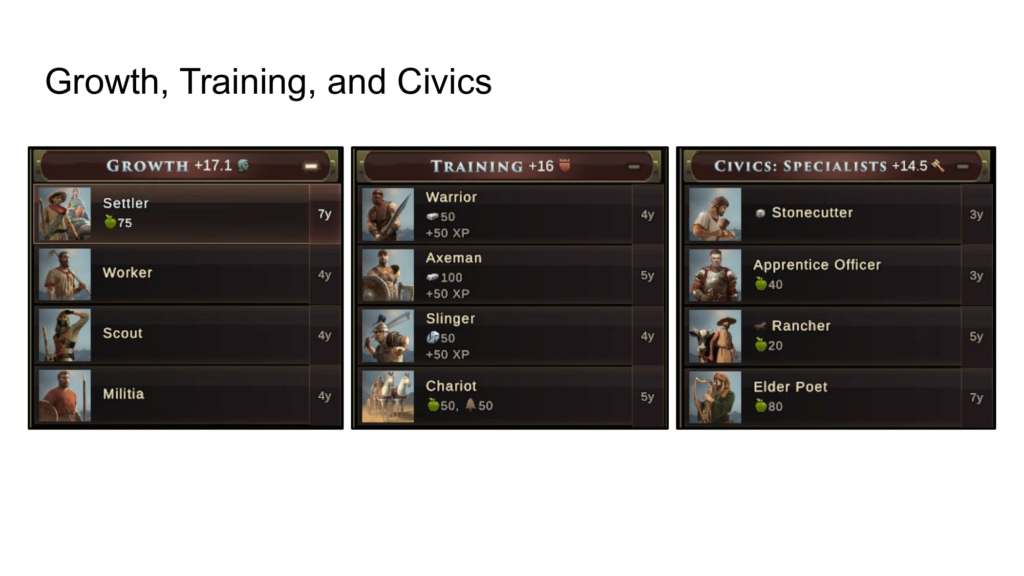
Civ has always had a generic Production resource, sometimes called Shields, Hammers, or just Production, but it went into building everything – Settlers, Warriors, Temples, the Pyramids, everything. I wanted to split this production into different categories so that cities could actually specialize, one might be good at building military, another at developing specialists, another at creating settlers and workers, so we split Production into three categories: Growth, Training, and Civics.
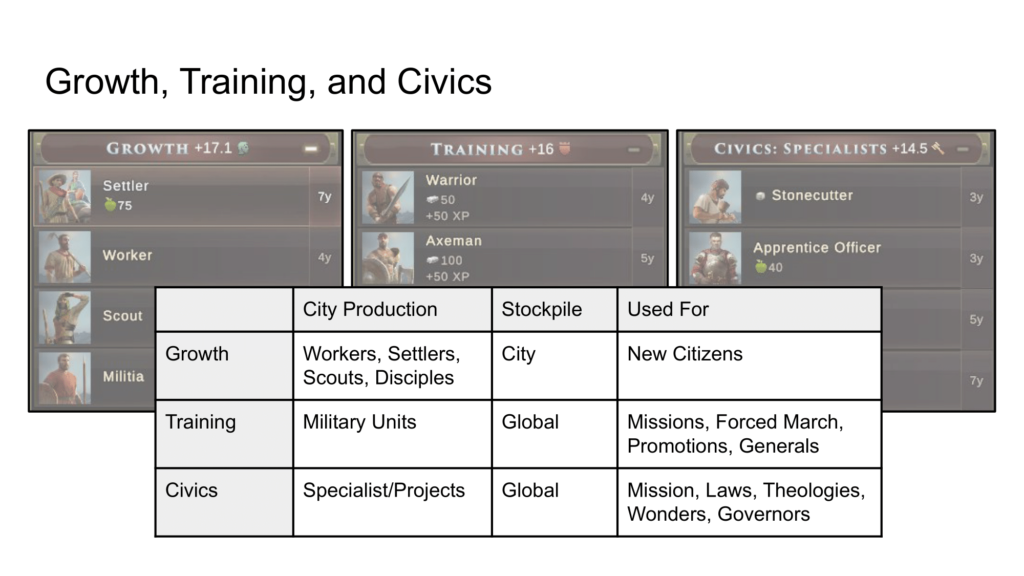
I didn’t originally know what to do with these yields when the city wasn’t producing that type of item, but the stockpiles for food, iron, wood, and stone were working so well that I decided to try that for Training and Civics. I didn’t know exactly what I would use it for but was confident that I would find a use for it over time. As you can see, we eventually found plenty of uses for the global Training and Civics stockpiles.
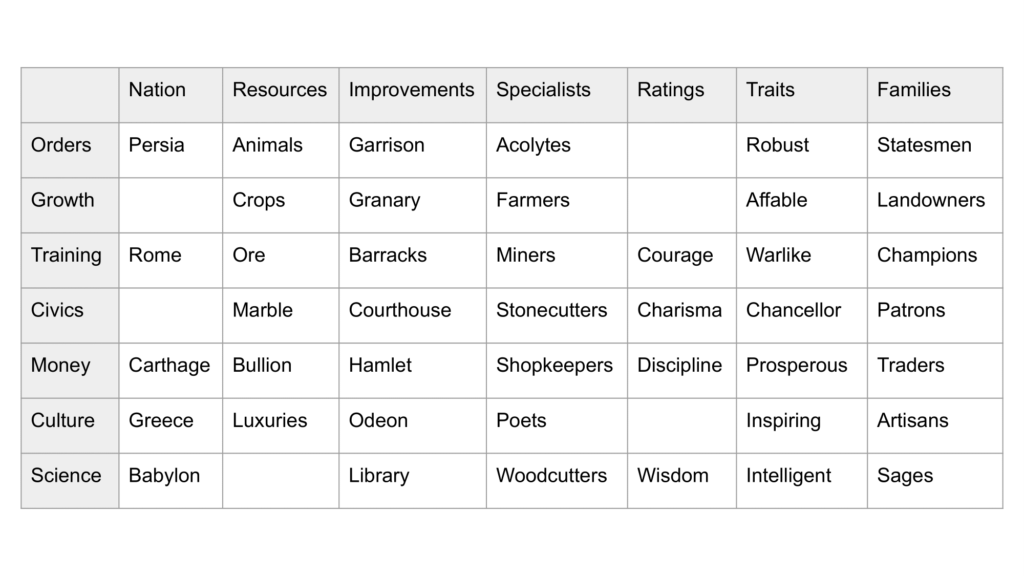
I put together this chart of all the non-resource yields and how they connect with the game. You can see how every yield occupies a unique place in the game, and even this is an incomplete list! We could also do it by Shrines, by Theologies, by Council, and so on.
Another benefit is that the code considers all of these yields, including food, iron, wood, and stone, the same type of thing, so it is very easy for the event system to suggest some unusual tradeoffs. Would you like to sacrifice some orders for some extra science? Maybe trade your civics to another nation for food in return?
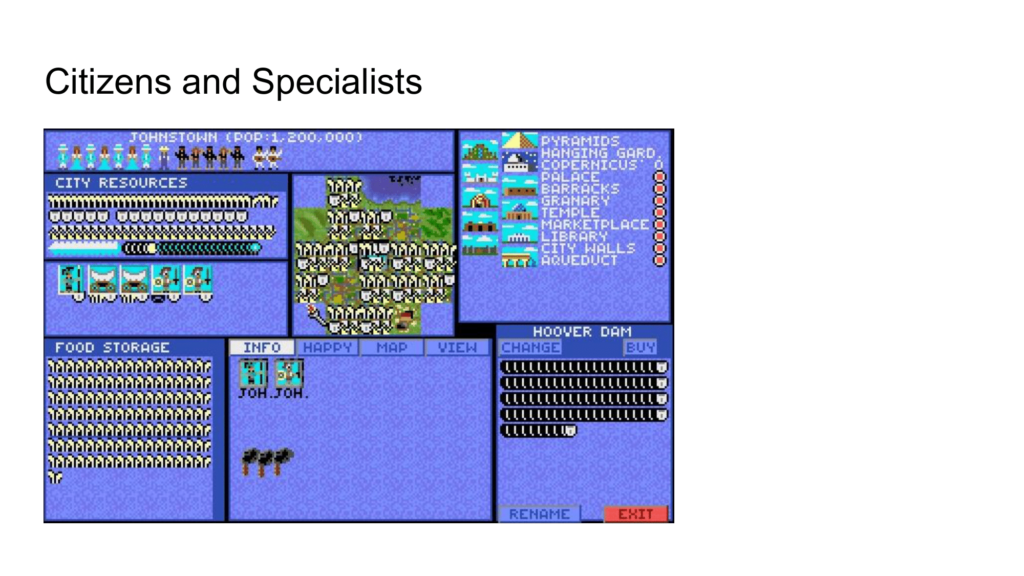
One of Civ’s most troublesome systems is the tile/citizen model, where your food, production, and commerce is determined by which tiles your citizens work. It’s a complicated system. Here’s the Civ 1 city screen – I remember one Civ developer once quipped that it’s best feature was that if you clicked anywhere, it just went away and you were no longer afraid.
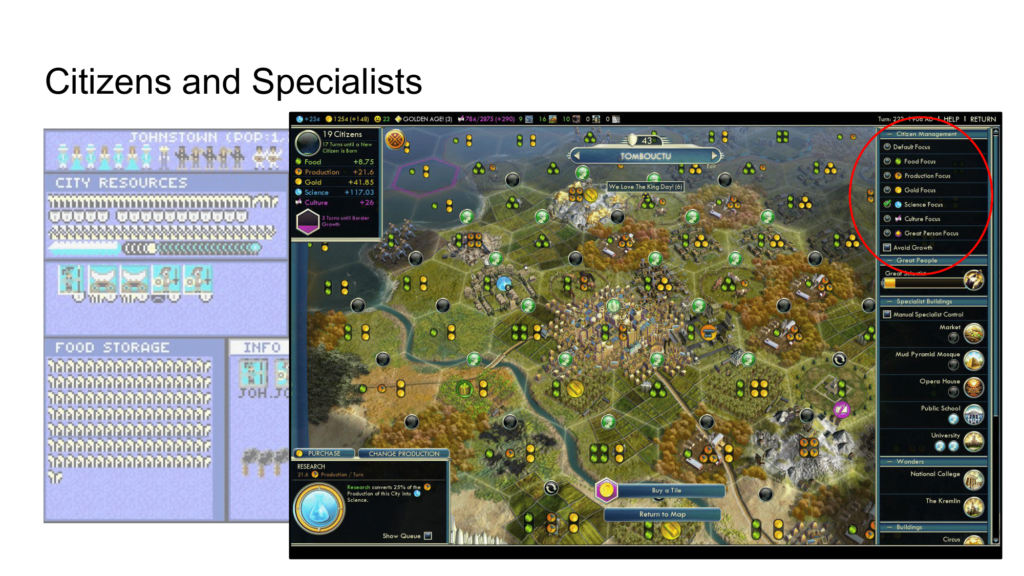
Each citizen in a city is assigned to a specific tile, and these tiles all have different yields, and the player has the freedom to move every citizen around every turn. Over time, the designers have added all sorts of automated systems to encourage players not to mess with their citizens. (And remember with workers how automation is a red flag?)
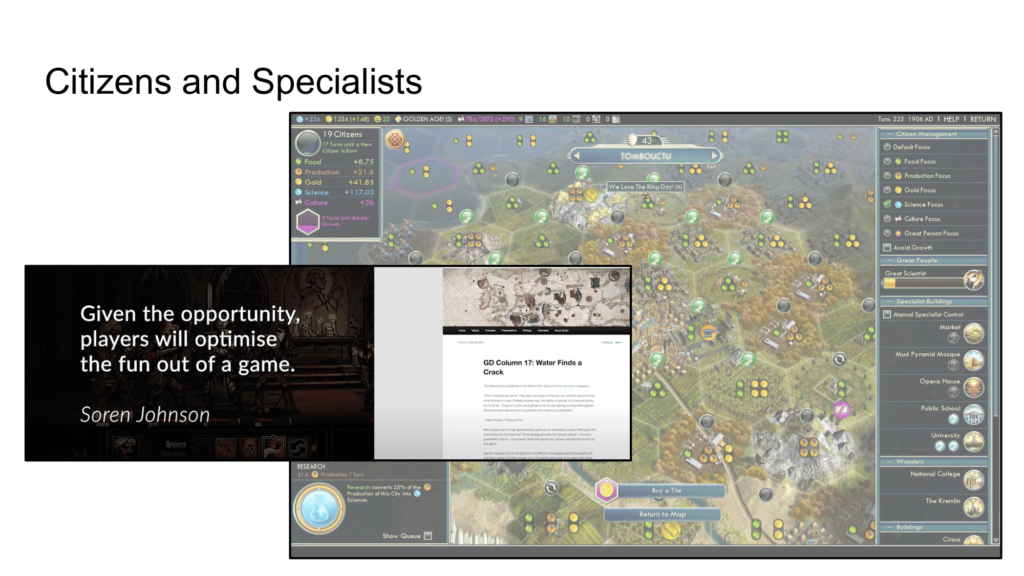
Even worse, for hardcore players, the citizen system is a temptation to lose hours and hours of time with needless micromanagement because there is no cost to moving your citizens around every turn, to eek out some small 1% benefit. These are not fun decisions. There’s a pattern to these systems which suck the player into boring micromanagement – they lack any real tradeoffs, either because they have no costs or because they are temporary. Interesting decisions come from giving something up and from making decisions that you’ll have to live with for the rest of the game. Decisions where you have to think holistically past the information horizon. You aren’t just doing math to figure out what gives you a single extra food this turn; instead, you are making an intuitive decision about what might get you more food farther down the road AND whether food will be more or less valuable to you latter on than it is right now.
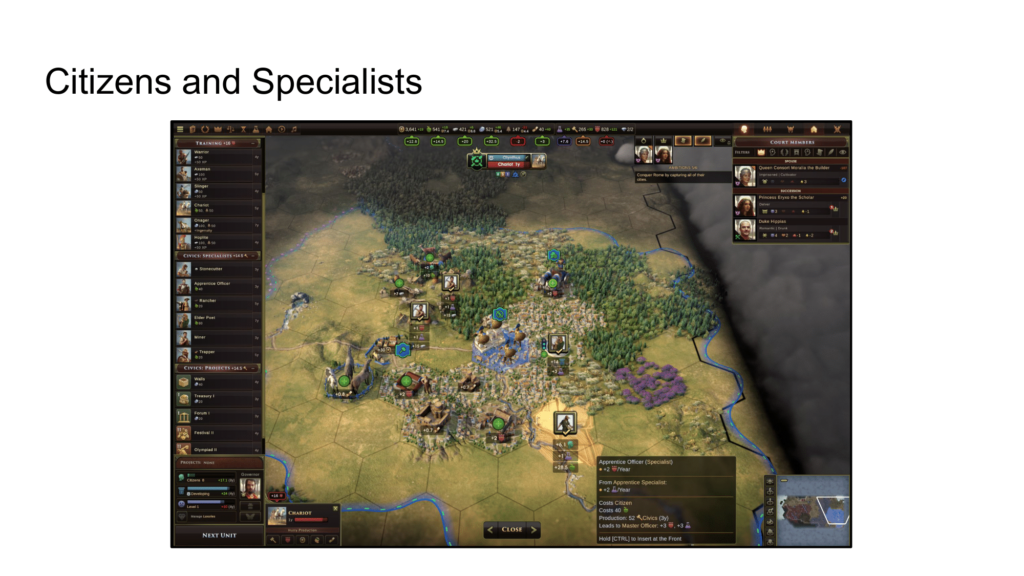
Our way out of this problem is to have ALL improvements produce yields on their own, but Citizens could be permanently turned into Specialists on an improvement to boost its output by 50-100% and give multiple other benefits, like extra science. Further, these Specialists would each have a cost, both a food cost and an opportunity cost. Building a Trapper or a Poet doesn’t just cost Food, it also means your city is not building a Chariot or another Settler. More importantly, though, your decisions would be permanent, there is no opportunity to go back to micromanage and rewind your decisions. Permanent decisions are a very important tool for a designer – it gives the player the freedom to move forward and not optimize the fun out of the game.
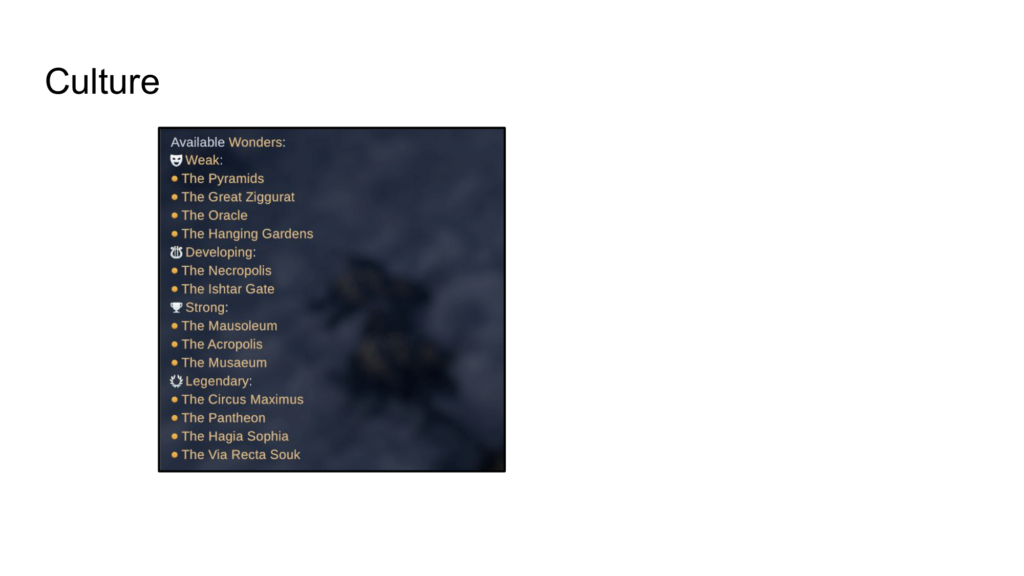
Finally, let’s talk about Culture, which as I mentioned before, no longer determines borders. Instead, Culture is now measured in four discrete steps that determine the internal advancement of your cities. (Brian Reynolds actually suggested I rename Culture to “Civilization”… but that was too cheeky for me.) Having four separate culture levels per city was a new orthogonal way to measure progress outside of the tech tree. Thus, Wonders are not unlocked by techs but by CULTURE, which also allows us to rotate the ones available each game.
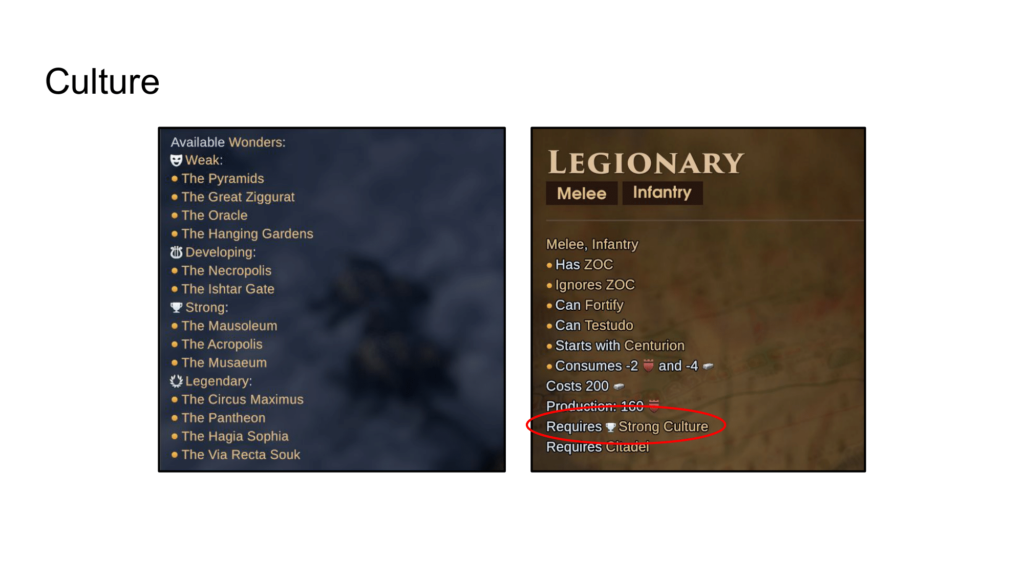
We could also tie your nation’s unique units to a city’s Culture level, and also many urban buildings, so Courthouses would require cities with Developing Culture, Ministries would require Strong cities, and Palaces Legendary ones.
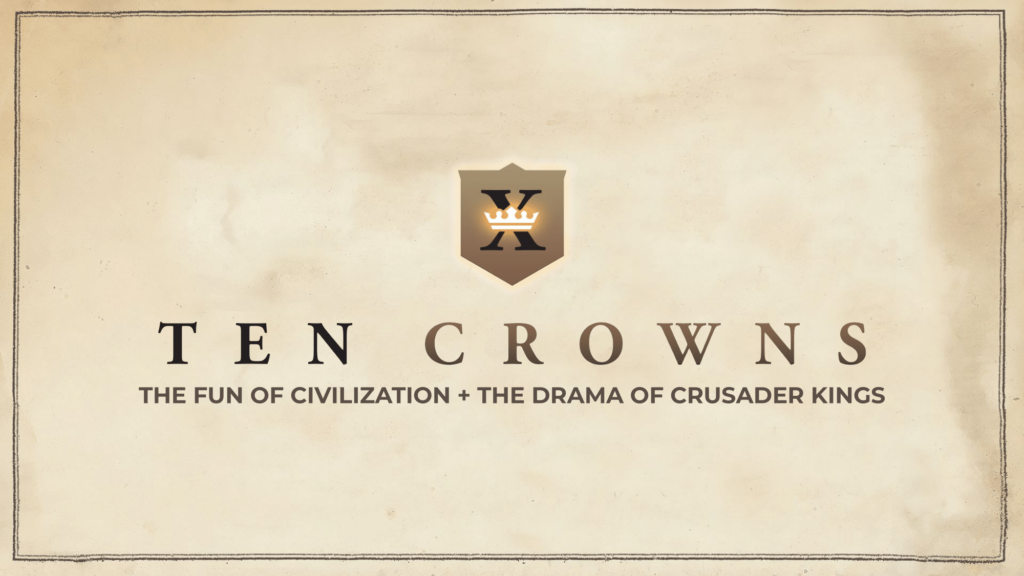
Now that we felt good about the gameplay, we felt it was safe to start exposing publishers to our ideas. This is the first slide of our pitch deck. Note that it used to be called Ten Crowns, and the simple elevator pitch is right there in the first slide: The Fun of Civilization plus the Drama of Crusader Kings. Expect many things to change about your design, including the title, but it’s important to have a core vision that doesn’t change. Indeed, most of the reviews for Old World describe the game exactly this way, as a hybrid of Civilization and Crusader Kings.
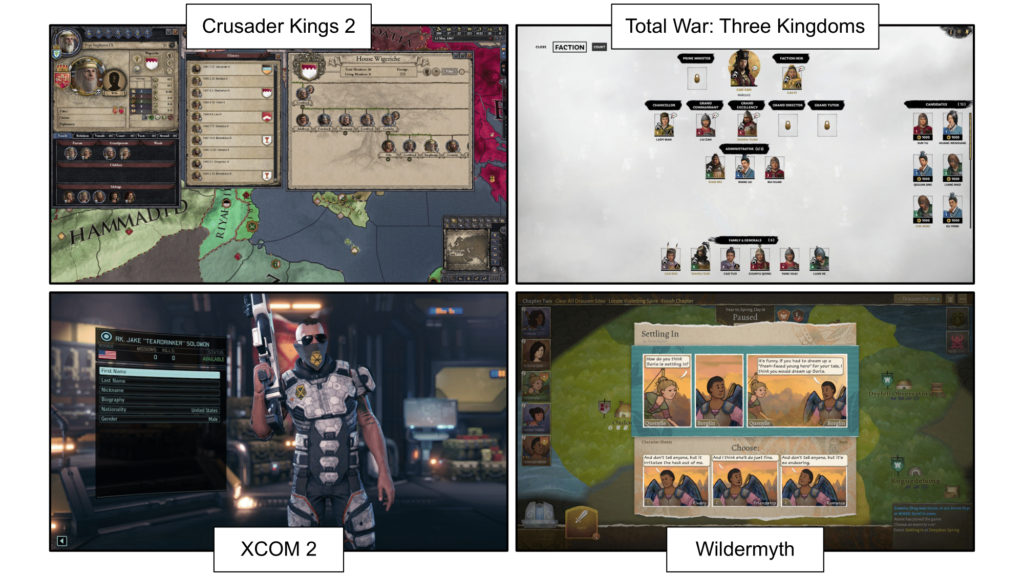
The initial impetus for characters originally came from the popularity of Crusader Kings – we could see how much players latch onto real characters who are born, grow, age, decline, and die. It’s not just CK, though, you could see this trend from XCOM through the Total War series up to new games like Wildermyth. People want to care about the characters in their games.
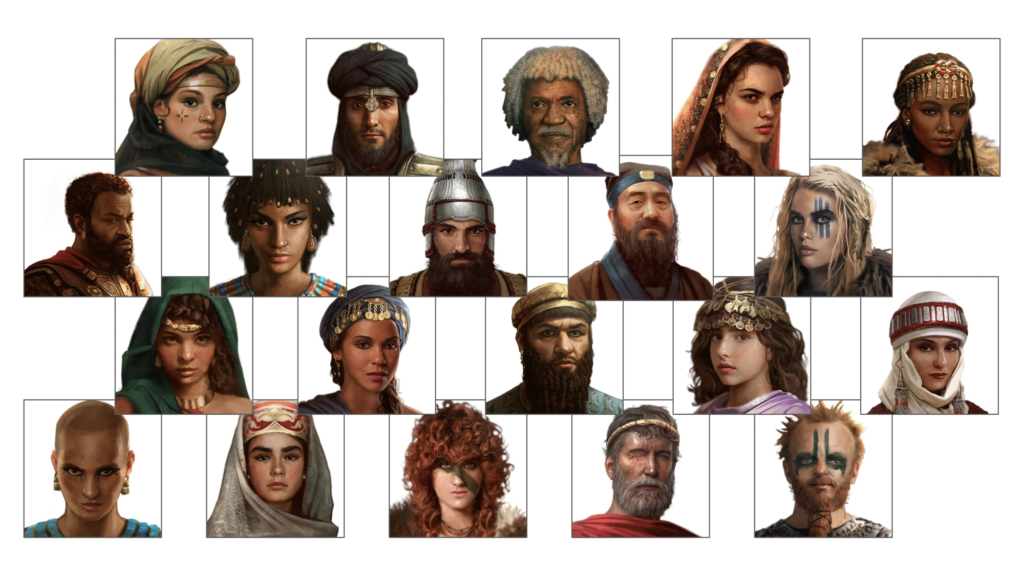
However, the bigger question is WHY would a game like Civ benefit from characters. First off, we should mention that it’s actually impossible to put flesh-and-blood people into Civ because the game covers 6,000 years of history. That’s why we limited our timeframe to just Classical Antiquity, so that the game could plausibly last a few generations. Nonetheless, ignoring the thematic issues, how would characters change the GAMEPLAY of Civ?
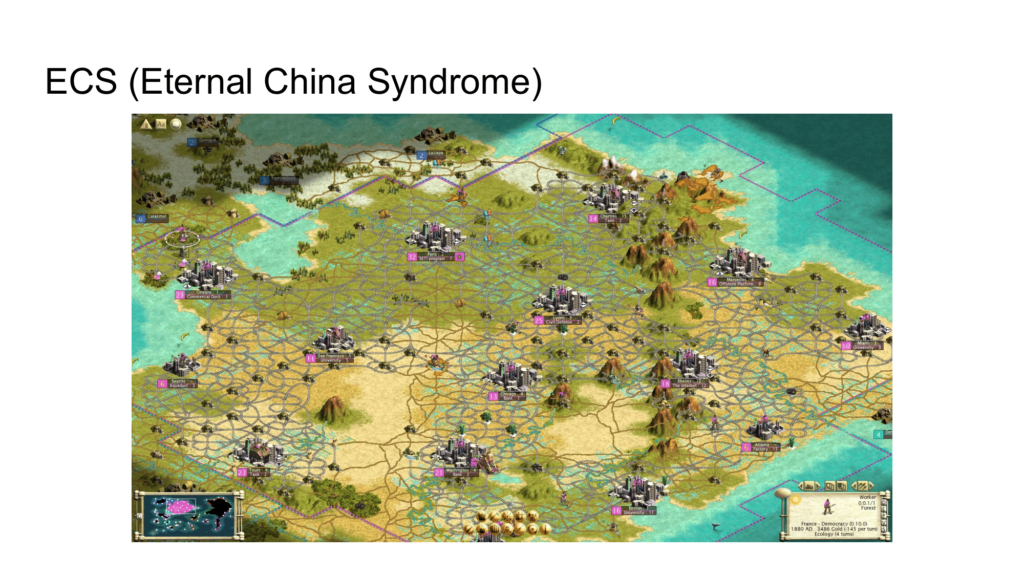
To answer that question, let’s talk about another long-standing problem with Civ known as ECS – the Eternal China Syndrome. It means that over time, Civs become more stable, less dynamic, and less interesting to manage. As they add more and more buildings and wonders and laws and technologies, the internal problems get less and less interesting. A bonus that was interesting 30 turns ago now just fades into the background. The only real pressure exerted on the player is from external forces – enemy players.
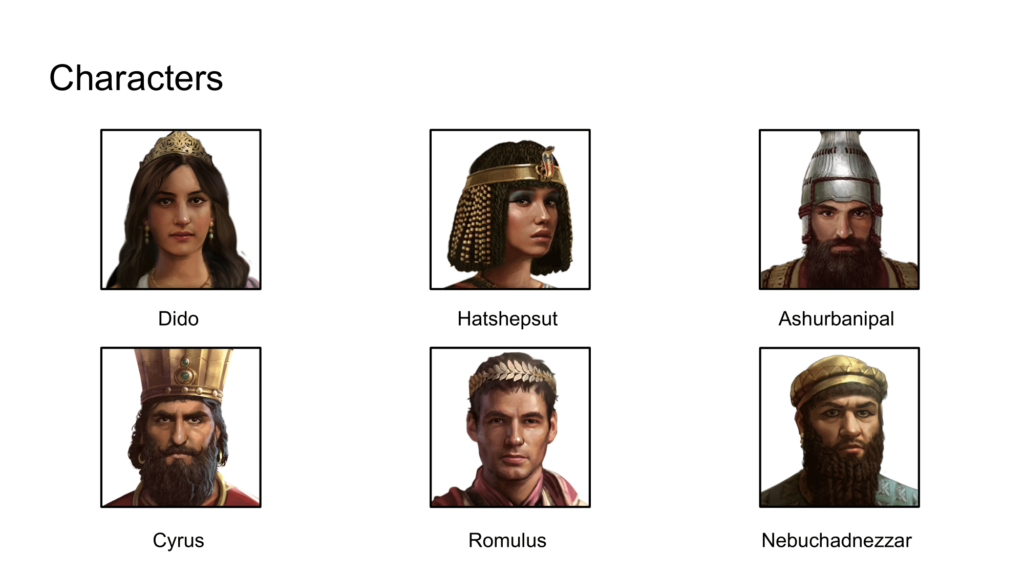
Character, however, provide a way out of the ECS problem. Buildings and technologies never get old and die, but character sure do. If we attach powers to characters, the game will shift as different leaders take and leave the throne – not to mention new courtiers, heirs, councilors, spouses, and so on. The dynastic landscape is constantly changing. Civ might be a lot more interesting if, say, the map changed every so many turns. Unfortunately, that just doesn’t make any sense thematically even if it would be good for gameplay.
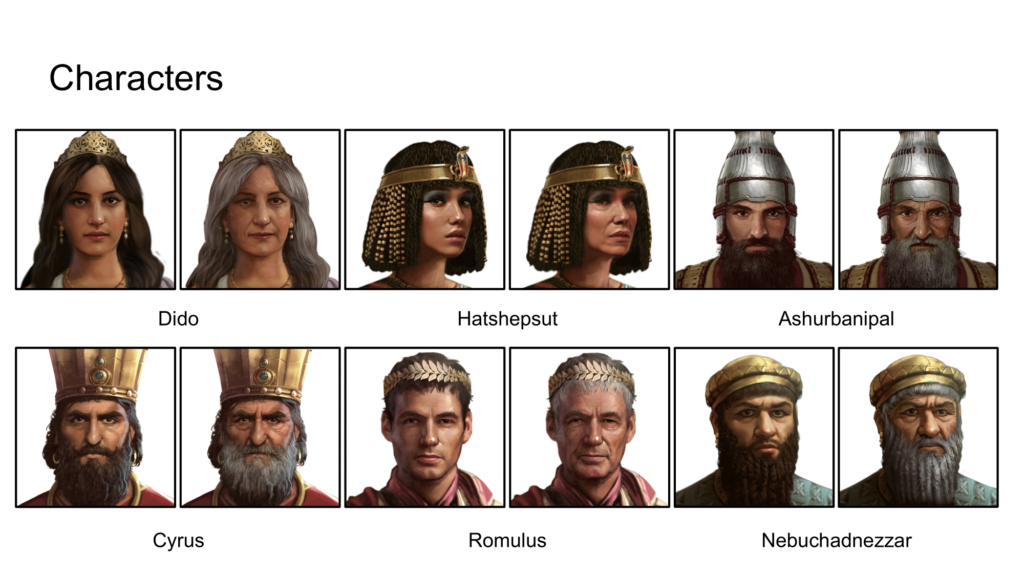
However, characters changing, growing old, and dying, doesn’t just make sense, players EXPECT it to happen. I can’t overstate how significant that is – taking powers away from the player in Civilization is basically a non-starter, yet here is a situation where players would be upset if they DIDN’T lose these powers.
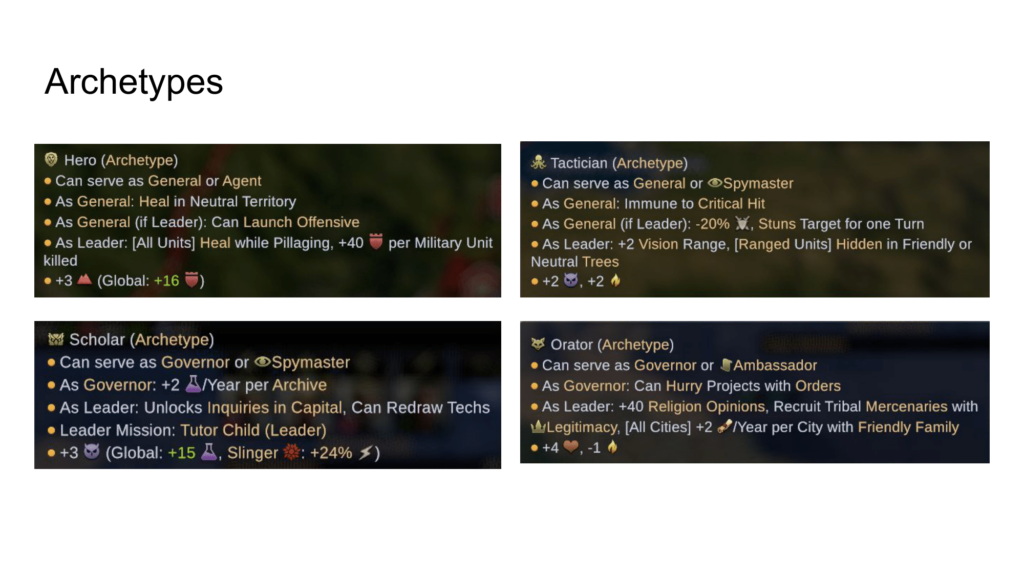
Indeed, we can add powers to characters that would normally be impossible to add to the game if they were accretive in the way Civ usually works – meaning that once you unlock the power, it never goes away. Each character in Old World is one of 10 archetypes, each with special powers if that archetype sits on the throne. Because players only have partial control of archetypes, we can add significant, game-changing abilities here, knowing they will be active roughly 10% of the time. Hero leaders can Launch Offensives (which allows units to attack twice a turn), Orators can hire tribal units as Mercenaries, Tacticians can Stun enemy units, and so on.
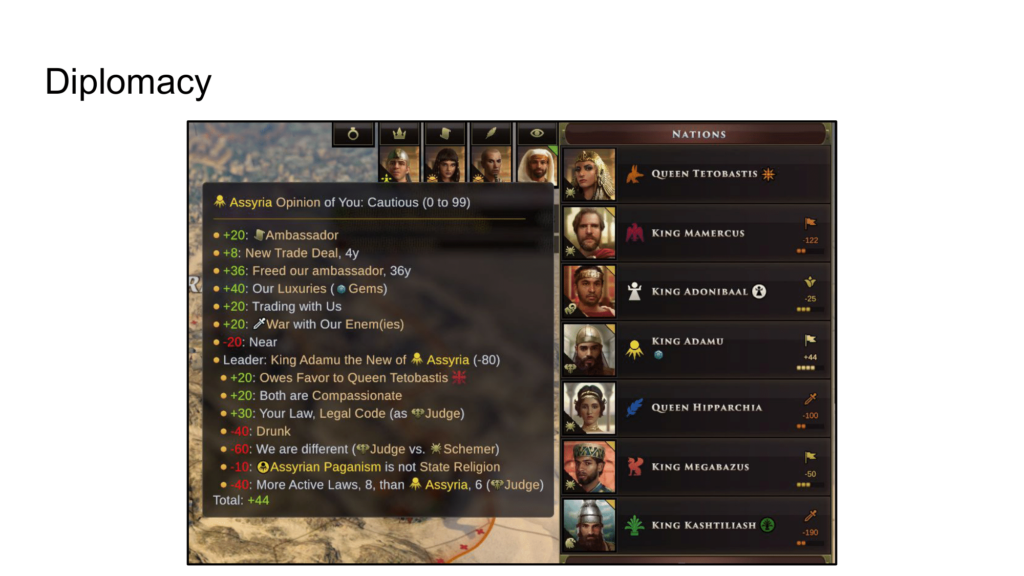
Dynamic characters are also a huge boon for diplomacy, an area where sudden changes are always tricky to pull off. In Civ games, if a friendly ally suddenly attacks you, it’s often describe as “random” or “unpredictable” AI, even though it’s crucial for the flow of the game that the AI’s ARE willing to change their opinion of you (or else the Eternal China Syndrome applies to them as well). With characters, however, it’s expected that a nation will change its opinion of you when a new ruler takes the throne. We didn’t design this – it just flows naturally from adding real people into the game. Thus, a problem that has bedeviled Civ for decades was solved in a way that feels natural to the player.

Pingback: My Elephant in the Room, Part 1 | DESIGNER NOTES
Pingback: My Elephant in the Room, Part 3 | DESIGNER NOTES